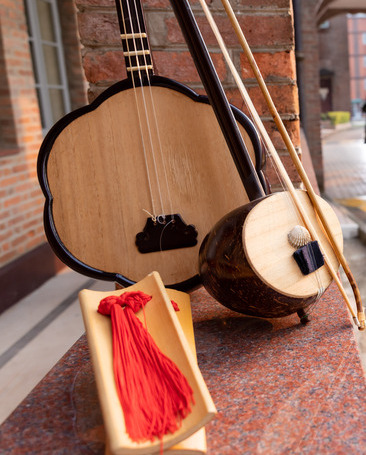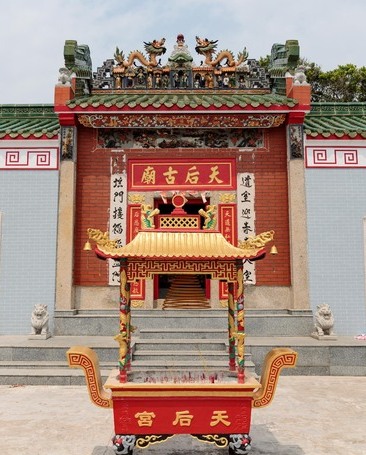Representative List
of the Intangible Cultural Heritage of Hong Kong
Background
The Leisure and Cultural Services Department (LCSD) announced on 14 August 2017 the first Representative List of the Intangible Cultural Heritage of Hong Kong (Representative List), which comprises 20 items. The Representative List will provide the Government of the Hong Kong Special Administrative Region (HKSAR) with a basis for prioritising resources and safeguarding measures for intangible cultural heritage (ICH) items, especially those of high cultural value and with an urgent need for preservation.
Updating of the Representative List
Based on the survey and research findings, the ICH Advisory Committee recommended 4 proposed items for the Representative List. The Government of the HKSAR collected views from the public on the items concerned from 27 August to 23 September 2024.
After considering all views received, the ICH Advisory Committee finally recommended the inclusion of the 4 items in the Representative List, increasing the number of items from 20 to 24. The updated Representative List was accepted by the Government of the HKSAR and promulgated in December 2024. Please click on the following Representative List of the Intangible Cultural Heritage of Hong Kong to browse the list of the 24 items.
Application for Bearers of the Items on the Representative List (Individuals or Groups)
The Chief Executive announced in the 2024 Policy Address that a mechanism and criteria for recognising the bearers of the items on the Representative List of the Intangible Cultural Heritage (ICH) of Hong Kong will be developed to promote the safeguarding and passing on of ICH. Making reference to the national ICH representative bearer recognition and management system as well as those of the Guangdong Province and Macao Special Administrative Region, while taking into consideration the needs of ICH inheritance in Hong Kong, the ICH Office of the LCSD has developed the mechanism and criteria for recognising the bearers of the items on the Representative List.
Applicants must be permanent residents of Hong Kong. The ICH Office will accept applications (from individuals or groups) from noon on 6 January 2026 (Tuesday) to noon on 2 March 2026 (Monday). Application forms can be downloaded from the ICH Office's website from 6 January 2026. Applicants are required to deposit the completed application forms together with the supporting documents into the red collection box marked with "Bearers of the Items on the Representative List of the ICH of Hong Kong – Collection Box" at Orientation Room 1 of the Hong Kong Intangible Cultural Heritage Centre (Sam Tung Uk Museum, 2 Kwu Uk Lane, Tsuen Wan, New Territories).
The ICH Office will provide a briefing session on the recognition mechanism and criteria for interested applicants (individuals or groups) at 3:00 pm on 12 January 2026 (Monday), at the Lecture Hall of the Hong Kong Museum of History (G/F, 100 Chatham Road South, Tsim Sha Tsui, Kowloon). Registration is required. Those interested must submit a completed registration form (in Chinese only) for the briefing session by email (icho@lcsd.gov.hk) or fax (2462 6320) to the ICH Office by 12:00:00 noon on 7 January 2026 (Wednesday). 100 places are available for registration, which will be allocated on a "first come, first served" basis. Priority will be given to ICH practitioners of the items inscribed on the Representative List. The ICH Office will inform applicants the results of their registration by email or fax. Further, the ICH Office may entertain on-site applications if there are available places on the day but priority will be given to successful applicants.
(In case of discrepancies between the English and Chinese versions, the Chinese version shall apply and prevail.)

Notes
* The 10 local items which have already been inscribed onto a higher threshold - the national list of ICH - were automatically included in the Representative List.
^ Cantonese opera was inscribed onto the UNESCO's Representative List of the Intangible Cultural Heritage of Humanity, making it a world ICH item.
§ Tin Hau Festival in Hong Kong and Hong Kong Cheongsam Making Technique were inscribed onto the National List of ICH in 2021.
The ICH Advisory Committee deliberated on and endorsed the selection criteria of the Representative List as follows:
| (1) | the item has been inscribed onto the ICH inventory of Hong Kong; |
| (2) | the item embodies local traditional culture and carries significant historical, literary, artistic, scientific, technological or arts and crafts values; |
| (3) | the item is transmitted from generation to generation and has a dynamic and living nature; |
| (4) | the item possesses the distinct traits of an ethnic group or a region, or manifests the characteristics of the local living culture as a typical example of that culture; and |
| (5) | the item exerts significant influence on the community, reinforces community ties and provides communities or groups with a sense of identity and continuity. |
Past Representative List of the ICH Inventory
First Representative List of the Intangible Cultural Heritage Inventory of Hong Kong (August 2017)
Press Release
First Representative List of Intangible Cultural Heritage for Hong Kong announced (August 2017)

































